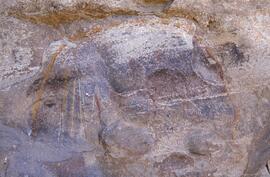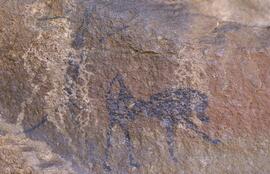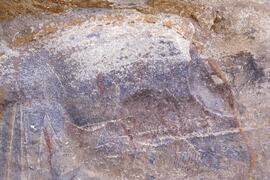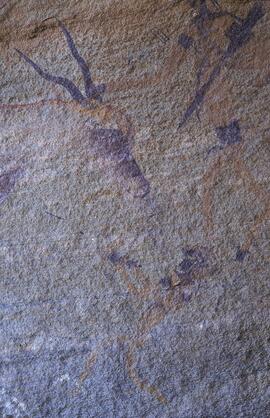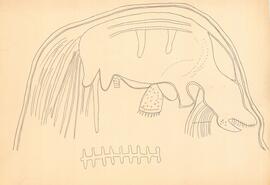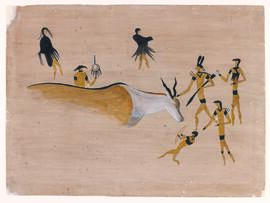Aasvogelkop II 1
10 Images & Collections results for Aasvogelkop II 1
10 results directly related
Exclude narrower terms
LEE LEE-RARI-LEE-RSA-AAS2-47.jpg
·
Item
Part of Lee, Neil
Baboons are painted and engraved more frequently than jackals, and they also feature more frequently in Bushman myth and folklore. The /Xam believed that, like the lion, the baboon had similar powers to those of shamans. It was supposed to draw these powers from a small stick of a plant, which it kept in its left cheek. Some depictions of baboons show a whole troop with males, females and babies. There are also therianthropic baboons which express the closeness of baboons to people and, more important, the association between baboons and shamans. Lee, Neil
LEE LEE-RARI-LEE-RSA-AAS2-13.jpg
·
Item
Part of Lee, Neil
The eland was the first animal that the San trickster deity, /Kaggen created and it remained his favourite.
The eland is the largest of southern African antelope and is much desired for its meat and fat. The San say that all other animals are like servants to the eland.
The importance of this animal is shown in the great variety of postures and perspectives. It is depicted running with tail outstretched, with uplifted head smelling the wind, and upside down, presumably dead. The eland is also depicted from the front or from the back, and even from above.
The eland appears in four important San rituals it is the most carefully depicted antelope in both rock paintings and engravings: Trance dance, boy's first kill, girl's puberty and marriage. It is believed that eland fat contains a lot of potency and in a trance dance shamans aspire to possess eland potency. Lee, Neil
LEE LEE-RARI-LEE-RSA-AAS2-10.jpg
·
Item
Part of Lee, Neil
The eland was the first animal that the San trickster deity, /Kaggen created and it remained his favourite.
The eland is the largest of southern African antelope and is much desired for its meat and fat. The San say that all other animals are like servants to the eland.
The importance of this animal is shown in the great variety of postures and perspectives. It is depicted running with tail outstretched, with uplifted head smelling the wind, and upside down, presumably dead. The eland is also depicted from the front or from the back, and even from above.
The eland appears in four important San rituals it is the most carefully depicted antelope in both rock paintings and engravings: Trance dance, boy's first kill, girl's puberty and marriage. It is believed that eland fat contains a lot of potency and in a trance dance shamans aspire to possess eland potency. Lee, Neil
ZA NASMUS NASMUS-NASMUS-RSA-AAS2-3.jpg
·
Item
·
02/12/1998
Part of National Museum
IZI GWS-IZI-GWS-01-30D.jpg
·
Item
·
2007
Part of Stow, George
